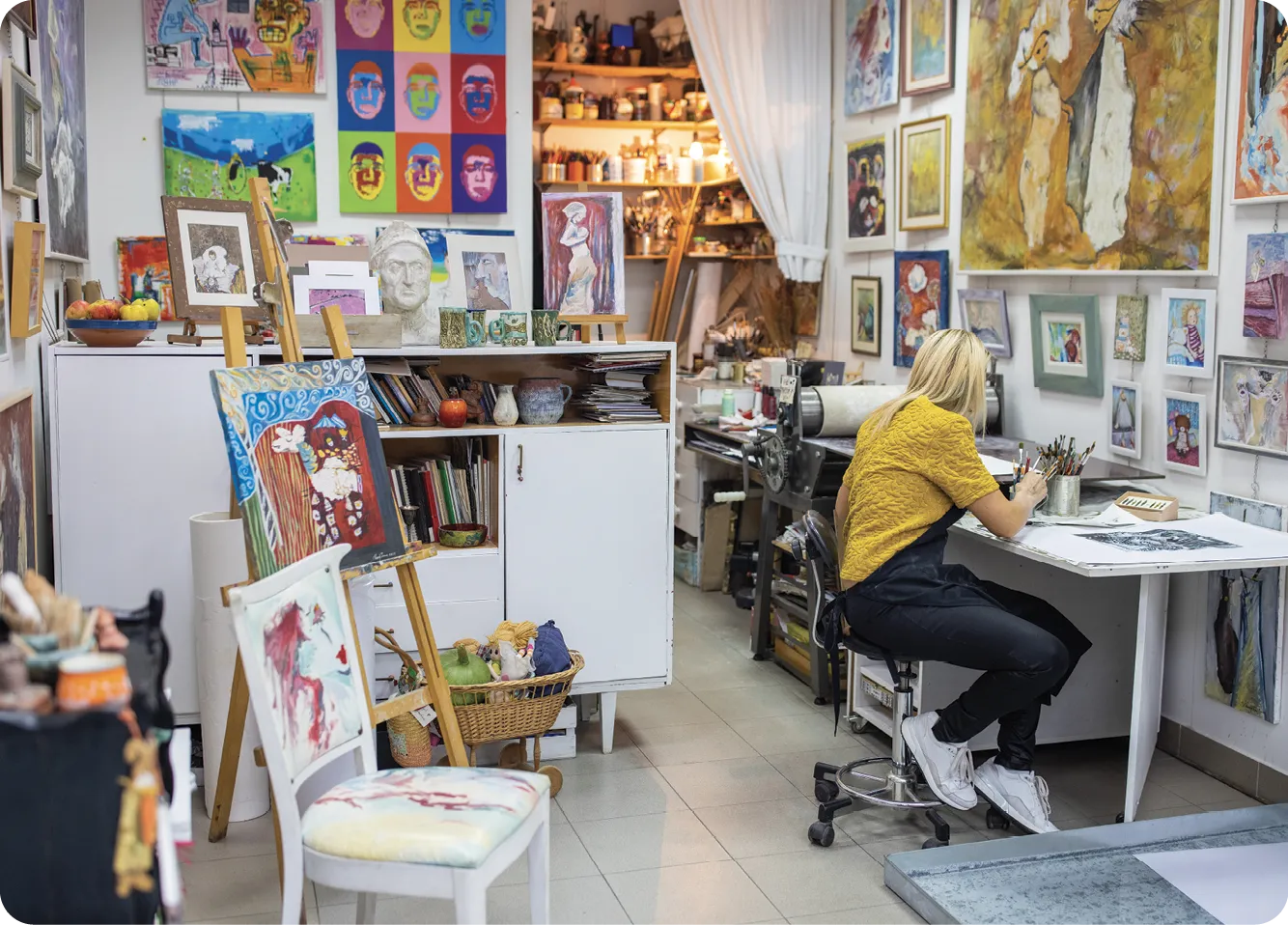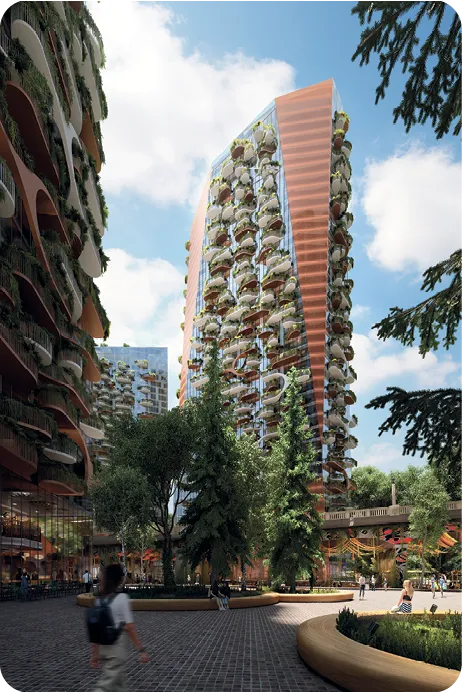Case Study 7
Axe 4
Objet d'étude 3
Urban planning, the Vancouver way
Ressource affichée de l'autre côté.
Faites défiler pour voir la suite.
Faites défiler pour voir la suite.
Design the perfect neighbourhood.
You are an architecture student and have to present a project for your final exam. You choose to revitalise a neighbourhood in the city centre of a densely populated city and also want to avoid the negative effects of gentrification. You find inspiration in the urban planning of Vancouver to create a culturally vibrant and diverse district that remains true to its heritage.
You are an architecture student and have to present a project for your final exam. You choose to revitalise a neighbourhood in the city centre of a densely populated city and also want to avoid the negative effects of gentrification. You find inspiration in the urban planning of Vancouver to create a culturally vibrant and diverse district that remains true to its heritage.


Ressource affichée de l'autre côté.
Faites défiler pour voir la suite.
Faites défiler pour voir la suite.
1Historical background: Vancouverism
Historical background: Vancouverism
The geography and conditions generated a city-specific built form, architecture, and urban design,
a phenomenon that was dubbed “Vancouverism”.
Characterized by a large downtown population
serviced by a mix of uses, Vancouverism signifies a
high-density cityscape of residential towers, which are
often attached to a large podium with commercial uses
inside. Combined with the aforementioned traits, the
ideal also refers to reliance on public transit, an abundance of parks and green spaces, and the preservation
of view corridors. Vancouver has 27 protected view
corridors designed to maintain vistas of the North
Shore mountains. Though it's a made-in-Vancouver
solution to the pressures of urban development, cities
around the world have attempted to emulate and
implement pieces of the concept.
In a podcast with the CBC, late architect Bing Thom described Vancouverism in his own words: “It's a spirit about public space. I think Vancouverites are very, very proud that we built a city that really has a tremendous amount of space on the waterfront for people to recreate and to enjoy. At the same time, False Creek and Coal Harbour were previously industrial lands that were very polluted and desecrated. We've refreshed all of this with new development, and people have access to the water and the views. So, to me, it's this idea of having a lot of people living very close together, mixing the uses. So, we have apartments on top of stores. In Surrey we have a university on top of a shopping centre. This mixing of uses reflects Vancouver in terms of our culture and how we live together.”
In a podcast with the CBC, late architect Bing Thom described Vancouverism in his own words: “It's a spirit about public space. I think Vancouverites are very, very proud that we built a city that really has a tremendous amount of space on the waterfront for people to recreate and to enjoy. At the same time, False Creek and Coal Harbour were previously industrial lands that were very polluted and desecrated. We've refreshed all of this with new development, and people have access to the water and the views. So, to me, it's this idea of having a lot of people living very close together, mixing the uses. So, we have apartments on top of stores. In Surrey we have a university on top of a shopping centre. This mixing of uses reflects Vancouver in terms of our culture and how we live together.”
Ressource affichée de l'autre côté.
Faites défiler pour voir la suite.
Faites défiler pour voir la suite.


Aerial view of downtown Vancouver.
Vidéo associée
(Timing: from 0:09 to 3:22)
Ressource affichée de l'autre côté.
Faites défiler pour voir la suite.
Faites défiler pour voir la suite.
Step 1
1
Watch the video and find out why
Vancouver isn't an ordinary North
American city.
2
Pick out the challenges urban planners
had to face in the 1980s as far as
transit was concerned. What solution
was found?
3
Read the text and list the
characteristics of Vancouverism.
Action!
For your project, you need to do some research about Vancouver. Focus on two districts: False Creek and Coal Harbour. Choose one of them and write a note about its history and significance today.
Ressource affichée de l'autre côté.
Faites défiler pour voir la suite.
Faites défiler pour voir la suite.
2Solving the art space crisis


Vidéo associée
(Timing: from 0:00 to 2:10)
Ressource affichée de l'autre côté.
Faites défiler pour voir la suite.
Faites défiler pour voir la suite.
Step 2
1
What is happening with
Vancouver art spaces?
What challenges do
artists face?
2
What is a Cultural
Land Trust? How could
it help preserve art
spaces in the city?
Action!
Design a concept for an art space that combines affordable housing and creative areas. Create a simple sketch and write a short explanation of your concept.
Cliquez pour avoir accès à un espace de dessin
Ressource affichée de l'autre côté.
Faites défiler pour voir la suite.
Faites défiler pour voir la suite.
3A city for everybody
A city for everybody
Canada's First Nations are breaking new
ground with several major housing developments in the city of Vancouver.
Like the US, Canada is facing a severe housing affordability crisis, in large part driven by a shortage of homes – and Vancouver has some of the highest housing costs in the country. These projects represent major strides in addressing disproportionate housing burdens on Canada's Indigenous communities, as Business Insider recently reported, as well as efforts to build generational wealth for tribe members.
One project minutes away from downtown Vancouver, being built by the Squamish Nation, will include 11 towers and 6,000 housing units. The Nation won back the 12 acres of land the project sits on about 20 years ago after their ancestors were forced off the land in the early 20th century.
Like the US, Canada is facing a severe housing affordability crisis, in large part driven by a shortage of homes – and Vancouver has some of the highest housing costs in the country. These projects represent major strides in addressing disproportionate housing burdens on Canada's Indigenous communities, as Business Insider recently reported, as well as efforts to build generational wealth for tribe members.
One project minutes away from downtown Vancouver, being built by the Squamish Nation, will include 11 towers and 6,000 housing units. The Nation won back the 12 acres of land the project sits on about 20 years ago after their ancestors were forced off the land in the early 20th century.
Ressource affichée de l'autre côté.
Faites défiler pour voir la suite.
Faites défiler pour voir la suite.


View of the Sen'áḵw village in Vancouver, 2024.
Ressource affichée de l'autre côté.
Faites défiler pour voir la suite.
Faites défiler pour voir la suite.
Step 3
1
What problem
do Canada's First
Nations face in
Vancouver?
2
What solution
has the Squamish
Nation found?
Action!
Still working on your project, you want to know more about the Sen'áḵw village. In pairs do some research about the project and the Squamish Nation. Report to the class.
Ressource affichée de l'autre côté.
Faites défiler pour voir la suite.
Faites défiler pour voir la suite.
Ready...
- Go over your notes and select all the aspects you want to include in your project.
Steady...
- Imagine a new district in a densely populated city (think about Vancourism, green spaces, cultural spaces, transit and gentrification).
Go!
- Present your project and explain your vision for the new district.
Cliquez pour accéder à un module d'enregistrement audio
Enregistreur audio
Une erreur sur la page ? Une idée à proposer ?
Nos manuels sont collaboratifs, n'hésitez pas à nous en faire part.
j'ai une idée !
Oups, une coquille
